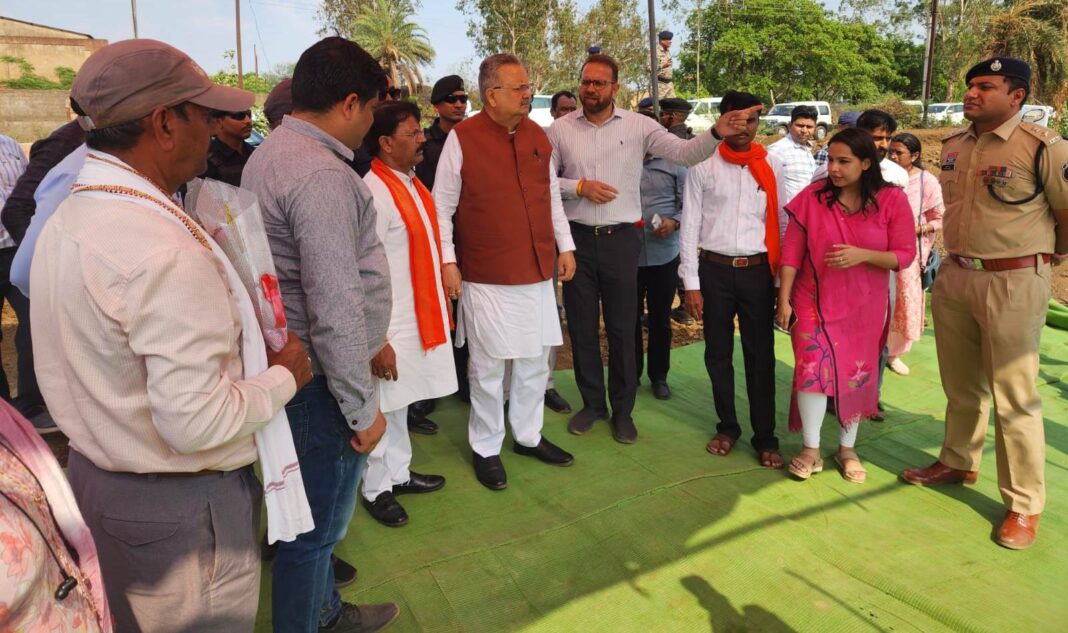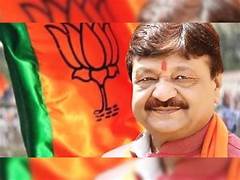During the Su-Shasan Tihar initiative in village Tedesara, Chhattisgarh Assembly Speaker Dr. Raman Singh praised cutting-edge groundwater recharge systems as vital steps in tackling future water crises.
Published on: May 12, 2025
By: [BTI]
Location: Rajnandgaon, India
In a strong endorsement of sustainable development practices, Chhattisgarh Assembly Speaker Dr. Raman Singh visited Tedesara village under the Rajnandgaon Janpad Panchayat to inspect water conservation structures developed under the state-led Mission Jal Raksha. His visit was part of the Su-Shasan Tihar (Good Governance Festival), during which he praised the district administration’s technological innovations aimed at replenishing groundwater resources.
At the site near the national highway, Dr. Singh observed the functioning of percolation tanks and injection wells – two key components of the Mission Jal Raksha model. These structures are designed to collect rainwater from cross-drainage systems on highways and channel it into percolation tanks, where it is naturally filtered and recharged into underground aquifers through specially designed injection wells.
“This is not just about the usage of water anymore,” said Dr. Singh while interacting with villagers and officials. “We need sustained efforts in water conservation and groundwater recharge. This innovative model proves that with correct technical design and efficient fund utilization, such initiatives can play a vital role in mitigating future water crises.”
Also read this-https://www.btnewsindia.com/blessings-of-maa-karma-driving-progress-of-sahu-community-assembly-speaker-dr-raman-singh/ https://www.btnewsindia.com/lohar-community-playing-a-vital-role-in-nation-building-speaker-dr-raman-singh-announces-₹10-lakh-grant/
District Collector Dr. Sarveshwar Narendra Bhure explained that the percolation tank installed near Tedesara village features a strategic design that directs rainfall runoff from the national highway into a natural storage basin. From there, water is filtered and gradually percolates into deep injection wells, helping to recharge the water table.
“This model has successfully captured rainwater, while simultaneously rejuvenating drying water sources,” Dr. Bhure noted. “We are using modern drilling methods to reach depleted groundwater zones and injecting filtered water directly into those strata.”
The effort is being scaled across the district. Dr. Singh highlighted that, under his initiative, approval has recently been granted for boring operations at 46 new sites across Rajnandgaon district under the Pradhikaran fund. The new borings will be equipped with integrated designs combining extraction and recharge systems, ensuring that groundwater usage is balanced by continuous replenishment.
“This technology connects directly with old groundwater aquifers that once brimmed with water but have now dried up due to overuse,” said a technical officer at the site. “Through injection wells and filter media, we are restoring these once-abundant sources.”
Zila Panchayat CEO Suruchi Singh emphasized the role of community involvement in these efforts. “Public participation combined with technical innovation is key to solving the water crisis. Mission Jal Raksha is being implemented across various dimensions to ensure long-term impact.”
The event was attended by a host of dignitaries and local officials including Sachin Baghel, President of the District Cooperative Bank; Yogesh Datt Mishra, Chairperson of the Chhattisgarh Labour Welfare Board; senior public representatives like Kiran Vaishnav and Kiran Sahu; and district-level officers including SP Mohit Garg, Forest Officer Ayush Jain, and Additional Collector C.L. Markandey.
Speaker Dr. Singh’s visit and endorsement are expected to further accelerate water conservation efforts in the district, with additional plans to integrate this model in other vulnerable regions of Chhattisgarh. He concluded by stating, “Mission Jal Raksha is not just a policy; it’s a commitment to the future – a model for the nation in how to conserve water, restore nature, and empower communities through sustainable governance.”




